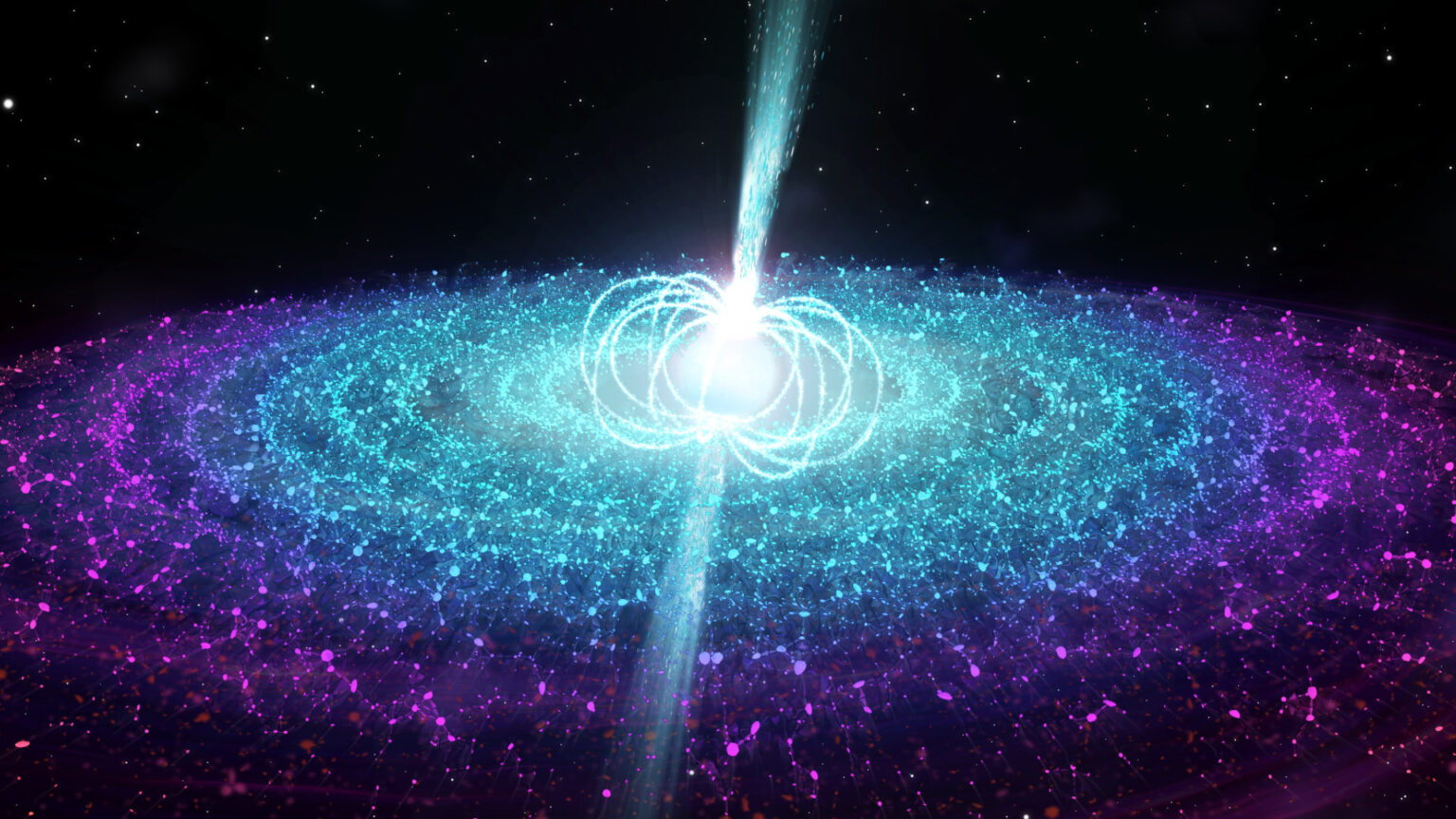The pulsar PSR J0901-4046 has been known since 2020 for its incredibly slow rotation period compared to other similar objects. A new study shows that the power of its magnetic field is previously underestimated.

The most magnetized pulsar in the Universe
Scientists claim that pulsar PSR J0901-4046 is a neutron star with the most powerful magnetic field known to humans. This object was opened on September 27, 2020. The MeerKAT radio telescope “heard” it at a frequency of 1284 MHz. Then everyone paid attention first of all to the unexpectedly long rotation period of the neutron star — 75.9.
For an object which has a diameter of tens of kilometers, such a rotation speed may seem huge, but in fact most pulsars rotate even more dexterously. They make a lot of rotations in one second. That is why PSR J0901-4046 turned out to be an incredible record holder, which had a rotation period three times longer than its predecessor.
Then scientists estimated the strength of the magnetic field at 130 trillion tesla. This is an incredibly large amount, and humanity cannot obtain such fields even in laboratory conditions. But then scientists discovered that this value was not enough for this pulsar to be the way we saw it.
There is a hypothesis that in fact it is not a pulsar, but a magnetar — another type of neutron star. But then it would become unclear why it still continues to emit periodic signals, albeit so slowly.
Incredibly powerful magnetic field
In a new study, scientists have suggested that PSR J0901-4046 is still a pulsar. They abandoned the model of magnetic-dipole radiation and suggested that its mechanism should be different — energy conversion during plasma propagation.
This model assumes that the magnetic field of PSR J0901-4046 is actually two orders of magnitude more powerful than thought and is as much as 27 quadrillion gauss. That is, it really is one of the powerful magnetized objects in the Universe.
The researchers add that the extremely strong magnetic field of PSR J0901-4046 indicates that the pulsar is not slowed down by magnetic dipole radiation, but rather due to the occurrence of an electric current of about 56 megaamperes when rotational energy is expended on the inflow.
According to phys.org
Follow us on Twitter to get the most interesting space news in time
https://twitter.com/ust_magazine

